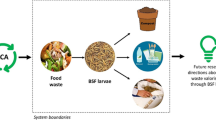Abstract
In this research, we investigated to examine the emission characteristics of radioactive carbon emitted from three types of pressurized water reactors. And we examined the possibility of 14C inventory reduction by changing operating conditions of one of the nuclear power plants. Results showed that 14C inventory in the reactor coolant system (RCS) remained constant before the overhaul (O/H) period and more than 90% of the radioactive carbon was found to be organic form. At spent fuel pool, the 14C chemical form of the liquid phase during the O/H period was also dominated by the inorganic (14CO2) form as in the case of the RCS due to the acid oxidized state. We applied gas stripper (G/S) and VCT purge operation to perform the 14C inventory reduction operation for Combustion Engineering type. In the case of gas strippers, approximately 50% of 14C inventory was reduced in the first year and then about 97% in the second year. Unlike our expectations, in case of VCT purge operation, 14C reduction effect was not showed greatly.







Similar content being viewed by others
References
Kotzer TG, Watson WL (1999) Spatial and temporal distribution of 14 C in cellulose in tree rings in Central and Eastern Canada: comparison with long-term atmospheric and environmental data (No. AECL–12002). Atomic Energy of Canada Limited
Table of radionuclides
Vance JN, Cline JE, Robertson DE (1995) Characterization of carbon-14 generated by the nuclear power industry. Electric Power Research Institute, TR-105715, Palo Alto
Kunz C (1985) Carbon-14 discharge at three light-water reactors. Health Phys 49(1):25–35
Sohn W, Kang DW, Kim WS (2003) An estimate of carbon-14 inventory at Wolsong Nuclear Power Plant in the Republic of Korea. J Nucl Sci Technol 40(8):604–613
Ibach DT (2007) Study on the Emission Monitoring of Radiocarbon (C-14) and general C-14 Aspects in at least 10 Nuclear Power Plants with Pressurized Water Reactors in European countries such as Germany, Switzerland, and England. TUV SUD Industrie. ETS1-22/2007, Germany, September
Magnusson Å (2007) 14C produced by nuclear power reactors-generation and characterization of gaseous, liquid and solid waste. Division of Nuclear Physics Department of Physics Lund University Box 118 SE-221 00 Lund Sweden
Korea Electric Power Research (KEPRI) (2007) Evaluation and characterization of the discharge of radioactive carbon compounds from domestic PWRs
Korea Electric Power Research (KEPRI) (2008) Evaluation and characterization of the discharge of radioactive carbon compounds from domestic PWRs
Yang YH, Kang DW, Lee GB (2010) Evaluation of 14C release characteristics in Korean standard pressurized water reactor. Nucl Eng Des 240(10):3611–3615
Yim MS, Caron F (2006) Life cycle and management of carbon-14 from nuclear power generation. Prog Nucl Energy 48(1):2–36
Kang DW, Yang YH, Park KR (2009) Evaluation of 14C behavior characteristic in reactor coolant from Korean PWR NPP’s. J Nucl Fuel Cycle Waste Technol (JNFCWT) 7(1):1–7
http://www.nucleide.org/DDEP_WG/Nuclides/C-14_tables.pdf. Accessed 26 Sept 2019
Korea Electric Power Research (KEPRI) (2011) Analysis on liquid sample for verifying the effect of operation to reduce 14C inventory
Acknowledgements
This work was supported by the Korea Institute of Energy Technology Evaluation and Planning (KETEP) and the Ministry of Trade, Industry & Energy(MOTIE) of the Republic of Korea (No. 20181520302310).
Author information
Authors and Affiliations
Corresponding author
Additional information
Publisher's Note
Springer Nature remains neutral with regard to jurisdictional claims in published maps and institutional affiliations.
Rights and permissions
About this article
Cite this article
Kang, D., Lee, J., Kim, S. et al. Evaluation on 14C emission patterns of various PWR types in South Korea and effectiveness of inventory reduction driving (IRD). J Radioanal Nucl Chem 322, 1409–1415 (2019). https://doi.org/10.1007/s10967-019-06805-1
Received:
Published:
Issue Date:
DOI: https://doi.org/10.1007/s10967-019-06805-1




